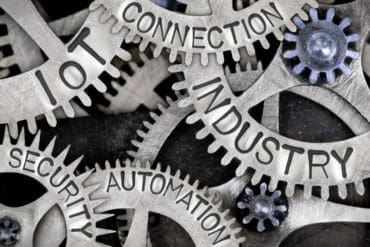
Learn how to ensure manufacturing digital transformation success by breaking down information silos and securely sharing IoT and other data with the right person at the right time and in the right context.
Manufacturers face many challenges in improving operational efficiency, reducing waste, cutting costs, and meeting sustainability and compliance requirements. Many see digital transformation as a way to help overcome these challenges. However, the key to any such efforts is freeing up the data that is locked in various business systems and information silos throughout a factory and securely sharing the data with the right person at the right time and in the right context.
RTInsights recently sat down with PTC’s Abby Eon, General Manager for Kepware Industrial Connectivity, and Howard Heppelmann, General Manager for ThingWorx Internet of Things (IoT), to talk about these issues. We discussed the importance of digital transformation for improving operational efficiency. We focused on the role of industrial connectivity and IoT in achieving these objectives, emphasizing the need for data access, contextualization, integration, security, and scalability.
Here is a summary of that conversation.
RTInsights: What pressures do manufacturers have when trying to improve operational efficiencies, including reducing waste, cutting costs, improving throughput, etc.?
Heppelmann: At the highest level, manufacturers have always been and will be under pressure to create more efficiency across the factory. One of the main challenges in getting manufacturers to a digitally transformed state is breaking the many silos within a factory setting and then making data accessible and organized. That’s going to become even more important as AI and analytics play a bigger role because the value of AI and analytics is directly correlated to the efficacy of the underlying data.
So, you need repeatable ways to access data. We work with many customers that have multiple factories, and no more than two of those factories might have the same ERP or [manufacturing execution system] MES systems, and none of those factories have the same equipment and tool landscape.
Eon: Building on what Howard said, applying digital technologies comes down to data. So, manufacturers need a data strategy to break down the silos, access the data, and ensure its quality. It’s no easy task, especially when – as Howard mentioned – no two factories are the same. Thus, the strategy needs to address the heterogeneity of the systems in place today while still being able to scale effectively across the enterprise.
An effective enterprise data strategy must also confront the historical isolation of OT networks – the operational data networks and control networks responsible for executing tasks and producing goods – from enterprise networks. These historical OT networks are no longer isolated and the data strategy needs to solve for how to open up this data to the world and to the internet without compromising cybersecurity.
RTInsights: What role do industrial connectivity and IoT play, or will they play, in helping address the challenges and achieve the objectives?
Eon: Industrial connectivity has been around for a long time – since the start of Industry 3.0 and automation – and has been leveraged to get data from machines or several different systems onto the controls network to drive efficiency.
However, when implemented, it was typically used for point to point integrations, e.g. connecting one machine to an HMI. It was never deployed strategically to collect vast amounts of data, aggregate it, and serve it up to other OT and IT systems.
The acceleration of digital transformation in manufacturing and growing adoption of IIoT and advanced analytics has created never before seen demand for OT data. As a result, we’re seeing more and more manufacturers leverage industrial connectivity deployed at scale across the enterprise to serve as an OT data foundation. It’s one source of truth or one place you can go to get data, and as Howard said, it needs to be organized.
So, with industrial connectivity, there is a move towards standardization, where manufacturers are trying to think more holistically about architecture and scale because they’re going to look at this data within a site and across multiple sites as well. The standardization aids in scalability, reducing administrative burden, and reducing cybersecurity risks.
Heppelmann: The issue today is that there are silos of information. Those silos can be OT silos, where information is locked into specific machines through unique PLCs that are on those machines. Or they can be IT silos such as the ones I mentioned where the customers have multiple plants, and only two sites might have the same MES and ERP.
What’s really different today is that the IT and OT landscape of the 1990s and 2000s, and even halfway here through the second decade in 2000, were not designed to work together. That’s the role that IoT platforms play. Unification, the term everybody likes to talk about, is IT/OT convergence. It is the convergence of machine data and tool data with IT systems data. There’s no chance that an average company is going to get to a digitally transformed state by ripping out everything it has and replacing it with a new system that has all that data organized in the new system.
What IoT does is it acknowledges that data is held in these different systems, and then it allows you, through the industrial connectivity, and through the IT connectivity, to be able to bring both of those data sources together. The data can then be contextualized at a level that sits above the IT and OT systems.
That’s the IT/OT convergence. And with that data now organized and contextualized that way, it becomes a very powerful platform for doing analytics in a very intelligent way. It also powers a whole new set of applications that are different from legacy applications. Those new applications are designed to be the result of both IT and OT data working in the same environment.
RTInsights: What are the benefits of using both industrial connectivity and IoT together?
Heppelmann: They are really hand in glove with one another. Industrial connectivity is what breaks down the OT silos across enterprises and allows data, regardless of the source format, to be propagated up to the IoT platform. Then, the IoT platform unifies that data with the IT systems data. And it’s really at that point where you have what is sometimes called a new data plane.
It’s not data that is locked in or held exclusively in one of the existing functional business applications or assets, but now it’s data, IT and OT data, that is homogenized together that then allows for entirely new digital processes to be developed against it.
Once that data is available, you’re able to leverage IoT capabilities to create applications that allow you to visualize that data and turn it into actionable insights. These applications may be developed to support use cases such as performance management of your plant, asset improvements, utilizations, and maintenance, and also applications that support the connected workforce with integrated tools and systems they need to get the job done efficiently and error-free with a complete view of the actual workflow that they’re being asked to do on the front line.
So, industrial connectivity is a key foundational ingredient in the DNA of IT/OT convergence, which is what unlocks the opportunity to do new process innovation and develop new applications that are not unique or not locked into the legacy data environment.
Eon: It’s really key that these applications are built in a way that they can scale for the future. They also need to be secure. So, when we think specifically about the industrial connectivity component, we need to make sure that new connections to machines that are being made to systems that were inherently secure before are not introducing new risks.
That foundational layer that he’s talking about that is secure and scalable will ultimately accelerate access to all of the benefits within those applications.
RTInsights: What are some examples of how the two are being used?
Heppelmann: The top use case that our customers pursue in the factory is performance management. If you think about the ingredients that are required to enable real-time performance monitoring and management, number one is that you need to know what products you’re making and the schedule of those products. That’s all in the IT systems. But then you also need to know what critical machines are doing the processing, how many good counts and bad counts you are getting along the way, what the quality and defect rates are, and all of that.
When you do these things independently, you get a very analog sort of approach to performance optimization and continuous improvement.
What we’ve been able to do by leveraging IT and OT connectivity is unify that information into a real-time closed loop system that systematically identifies, based upon the products they scheduled, what the biggest non-conformances are on the factory floor to efficiency. They can find out where they are losing time. They can use the data and embedded analytics to interrogate the data to understand the root causes and identify and link to various activities that drive improvements. When those improvements are effective, they can stick them in a database so that they’re available again the next time. And then they can just run that system continuously.
In an IT/OT-enabled continuous closed-loop digital environment, the system identifies itself, is fed the information, and identifies what the challenges are. I can look over a network of 38 factories for example and understand instantly what factory or even a specific line is having the most troubles today. I can put resources into trying to solve those problems at that exact moment, so that before the end of the day, we can recover lost time.
Eon: From a connectivity standpoint, now that machines are able to provide data they have inside of them, we’re able to identify bottlenecks and other places where improvements need to be made. In the event those improvements are related to machines, you can, in an automated fashion, send feedback to the machines to drive improvements and then measure those improvements.
So, it’s not a report, “Let me go do something.” Now, we can talk to that equipment and do it in a scalable way. That’s when you really start to get those full closed-loop feedback cycles that are really powerful.
RTInsights: How does PTC help?
Heppelmann: PTC has a best-in-class portfolio of solutions built on top of our industry-recognized IoT platform, which has helped manufacturers across the world be more efficient, agile, and flexible in the way they leverage industrial data to drive value. Our Connected Manufacturing Suite, a composable set of products, consisting of modular and integrated applications and building blocks, can be flexibly combined to form individual customer solutions that fit into various manufacturing environments. It breaks through the factory efficiency plateau through closed-loop performance management. It connects workers with their jobs and with one another with an array of role-based applications. It creates a concurrent collaboration between engineering and manufacturing with shared data and integrated processes. This allows manufacturers to keep pace with competition by reducing operational costs, improving asset efficiency, and maximizing revenue growth by cutting lead times, lot sizes, and time to market
Eon: Howard spoke about the portfolio and the possibilities there. We’ve helped some of the largest manufacturers in the world. When it comes to emerging concepts or newer technologies like IoT, this is a place where we understand the best practices, pitfalls to avoid, and what’s going to hold you up. Trust me, with connectivity, the way that you organize your data and the way that you connect your systems are not normally the first things people think of when they start thinking about, “What can I do with IoT?”
PTC really helps bring in the expertise, knowledge, and best practices, not just in the way that our products work together but in the way our people also work with them. And that’s really vital to that piece that we talked about upfront, with that cultural change, because if you don’t have the hearts and minds of these employees and they can’t trust it, we can’t help them grow and scale.
RTInsights: Can you give some examples of the benefits or successes PTC customers have realized?
Heppelmann: We work with a large global manufacturer with roughly 300 factories. They are in multiple industries, including automotive, aerospace, and energy. Their top use cases are real-time performance management, asset monitoring and utilization, and then what they call the connected work cell.
From a performance management perspective, they’ve seen a 10% improvement in efficiency, and from a connected worker perspective, they have gone, by now integrating and enforcing processes at the work center; they’ve achieved 100% adherence to standard work, which was very hard before when the sort of source of material was multiple systems, and a lot of paper in between.
In the asset monitoring space, they have seen a 15% reduction in unplanned downtime of critical assets.
In every case there, Kepware provides the industrial connectivity to a source that grabs data from the tools and equipment that the manufacturers are using and feeds that up to these different use cases of connected workers, performance management, or asset monitoring.
Eon: Another example is Brembo, a world leader and innovator in automotive. Brembo has more than 40 facilities across 14 countries – all with unique processes and equipment – and Brembo had plenty of data but little insight. They needed a way to integrate disparate sources of process data and gain insights into plant floor operations.
Brembo faced several challenges. First, they lacked visibility into line operations; second, their troubleshooting capabilities were curtailed by slow, manual data collection; and third, Brembo faced barriers to ensuring consistent operations and minimizing variance—specifically, they struggled to catch variances early and therefore had a constrained ability to limit quality impacts and reduce scrap. Due to these challenges, Brembo could not maximize efficiency across production. They needed a way to integrate disparate sources of process data and gain insights into plant floor operations.
Brembo leveraged the connectivity of Kepware and the rapid development capabilities of ThingWorx to implement a real-time production performance monitoring (RTPPM) use case within ten weeks. Kepware and ThingWorx are used to connect their production lines, and a centralized data hub—enabled by ThingWorx—aggregates data across servers for the display of plant-level, regional, and corporate-level views. Production data is collected and then displayed on three custom dashboards. Each dashboard provides a unique user group with real-time, actionable data as well as drill-ins, alerts, and process flow “pop-ups” that help operators troubleshoot in real time. With this connectivity in place, Brembo could start to ensure that their lines were operating consistently and efficiently, therefore minimizing variance. Moreover, with new insights unlocked, Brembo developed new KPIs to increase value, save time, and build a better foundation for future improvements.
Brembo is improving OEE by decreasing scrap and re-work, enhancing quality, and improving uptime and throughput. Ultimately, just being able to have those efficiency gains and that visibility, I believe it saved upwards of $1.5 million in the first year.
To learn more about IoT, industrial connectivity, and the topics discussed here, download this paper.









